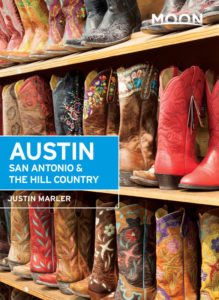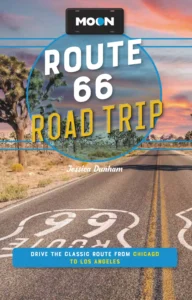Childress to Anson
Childress
A vintage Texas town built around an old Spanish zócalo (town square), Childress (pop. 7,291) is an important shipping and supply point for surrounding grain and cattle ranches and serves as the market town for area cotton farmers. Located at the junction of US-83 and US-287, Childress was named after George Childress, the principal author of the Texas Declaration of Independence.
The once picturesque downtown still houses the small but engaging Childress County Heritage Museum (210 3rd St. NW, Tues.-Sat., free); follow the signs. The downtown is one short step from dry, depressed implosion—the result of every business relocating to the congested annoying fringe highways—but the elaborate 100-year-old facades provide ample opportunities for nostalgic photography and aimless wandering. Depending on your time of arrival, the brick-cobbled streets and empty shells of formerly grand buildings smack more of a ghost town, but there are a few good antiques shops taking advantage of the historic charm.
Virtually every motel in town lines US-287 (Avenue F) east and west of the junction with US-83, but thanks to their highway-side location (“Midway between Amarillo and Wichita Falls”), they all suffer from a lack of quiet and privacy.
Paducah
South of Childress, US-83 passes through a magnificent landscape of rich red and gold canyon lands covered with vast groves of trees. Paducah, 30 or so mi (48 km) south of Childress at the junction of US-70, is a modest cotton town proudly arrayed around an art deco central courthouse modeled after an Egyptian temple. Brick-paved streets front abandoned stores and the huge old Cottle Hotel, which stands as a dormant reminder of better times, when harvest season or roundup would bring hundreds of transient field hands, cowboys, and card sharps into town. Nowadays Paducah offers little in the way of restaurants other than Double G (1112 Easley St., 806/492-3171). You can find a room at two motels west of US-83 along US-70; other options will require more than an hour’s drive, so if it’s quitting time, check out The Town House (1301 Easley, 806/492-3595), the better of the two.
West of Paducah along US-70 spreads the Matador Ranch, once one of the largest in Texas, with acres of hunter-friendly pasture and thirsty gullies amid semiarid canyons dotted with cedars and mesquite.
Hamlin and Anson
Deep in the heart of Texas, surrounded by miles and miles of green grass, red earth, mesquite and juniper trees, windmills, pump supplies, and peanut driers, the tidy town of Hamlin (pop. 1,997), “Home of the Pied Pipers,” is full of charming folks and streets lined by locust trees.
At the junction of US-180, 18 mi (29 km) southeast of Hamlin, sits Anson, named in honor of Anson Jones, the last President of the Republic of Texas. Anson was also a stop on the legendary Butterfield Stage U.S. Mail route that ran between St. Louis and San Francisco from 1858 to 1861, but these days it feels more like a stage set for The Last Picture Show, with handsome blocks of brick-fronted buildings forming a square around the stately Jones County Courthouse at the center of town. Anson is still a center for the local cotton industry, but its main claim to fame is the Texas Cowboys’ Christmas Ball, described in an 1890 poem by William Lawrence “Larry” Chittenden and recently revived by country-folk singer Michael Martin Murphey. In 1985 Murphey recorded a hit song also called “The Cowboy Christmas Ball,” after which he helped recreate the annual dance here in Anson.
You can see almost all of Anson by driving through on US-83, but if you want to see a scale model of what Anson looked like during its 1900s heyday, or simply want to learn a little something about Texas, stop by the Anson-Jones Museum (1300 Ave. K, 325/823-3096, Sun. 2pm-4pm Sun., or by appointment, free), across from the courthouse.
Related Travel Guides for the Road to Nowhere
Travel Map of the Road to Nowhere through Northern Texas
















